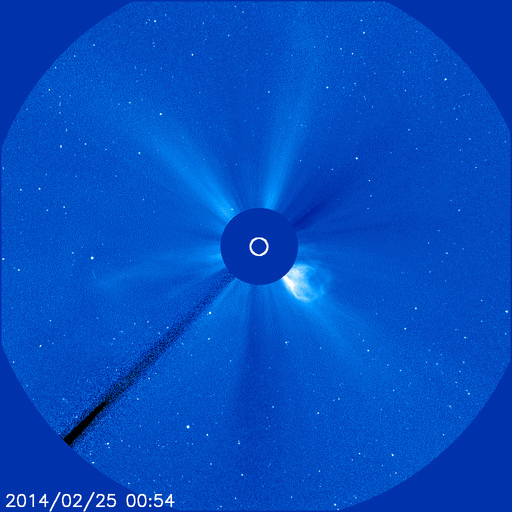As posted at Spaceweather.com
STORM WARNING: NOAA
forecasters estimate a 45% chance of minor geomagnetic storms on Feb.
27th when a CME from Tuesday's X4-flare is expected to deliver a
glancing blow to Earth's magnetic field. A dark and moonless midnight
sky favors the visibility of high-latitude auroras
X-FLARE! Long-lived sunspot AR1967 returned to the Earthside of the sun on Feb. 25th and promptly erupted, producing an X4.9-class
solar flare. This is the strongest flare of the year so far and one of
the strongest of the current solar cycle. A movie from NASA's Solar
Dynamics Observatory shows the explosion hurling a loop of hot plasma
away from the blast site:
Coronagraphs onboard the Solar and Heliospheric Observatory tracked this
material as it raced away from the sun, eventually forming a bright
CME, pictured below.. Radio emissions from shock waves at the leading
edge of the CME suggest an expansion velocity near 2000 km/s or 4.4
million mph. If such a fast-moving cloud did strike Earth, the resulting
geomagnetic storms could be severe. However, because its trajectory is
so far off the sun-Earth line, the CME will deliver a no more than a
glancing blow. NOAA forecasters expect a weak impact on Feb. 27th.
The source of the eruption
is long-lived sunspot AR1967, now beginning its third trip across the
Earthside of the sun. This region was an active producer of flares
during its previous transits, and it looks like the third time will be
no different. By tradition, sunspots are renumbered each time they
return, so AR1967 has been given a new name, AR1990. After today, that
is what we will call it

